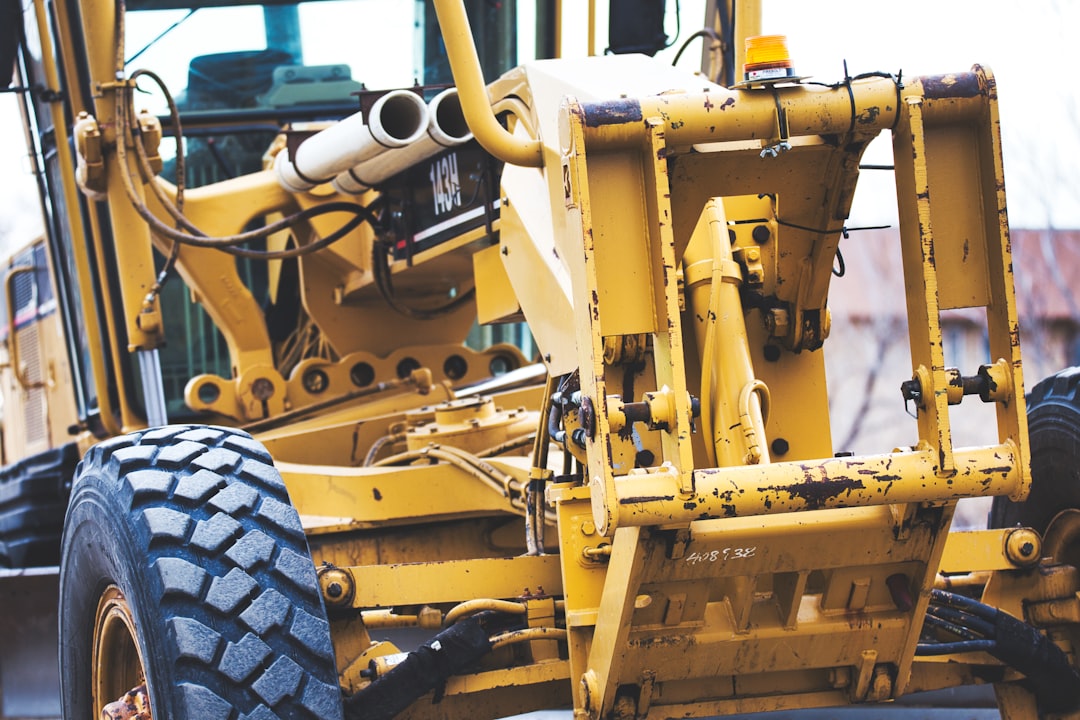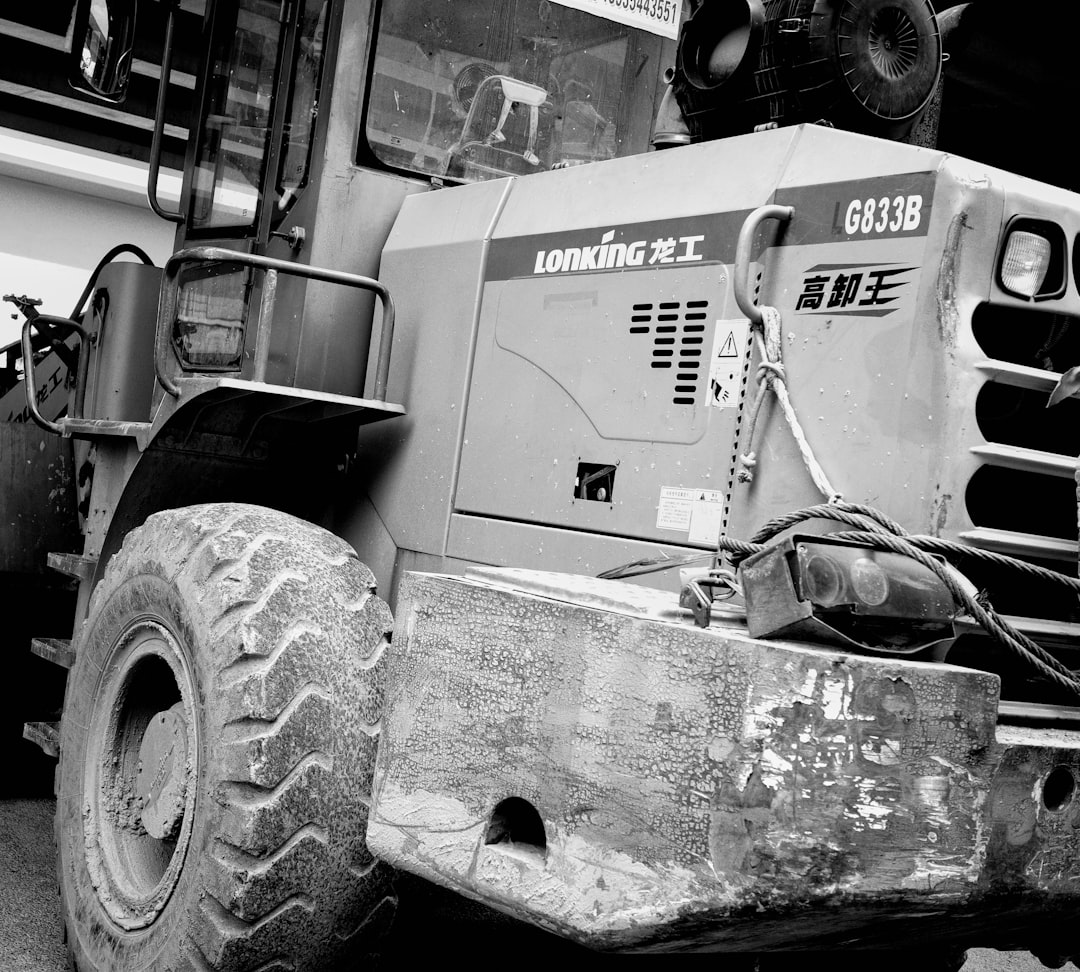

Engage prospects with a scan and streamline customer engagement with FREE QR code marketing tools by Sona – no strings attached!
Create a Free QR CodeFree consultation

No commitment

Engage prospects with a scan and streamline customer engagement with FREE QR code marketing tools by Sona – no strings attached!
Create a Free QR CodeFree consultation

No commitment
In today’s digitally driven world, QR codes have evolved from a novelty to a strategic powerhouse in bridging offline engagement with online action. For heavy-duty equipment repair services, QR codes offer a fast, app-free way to streamline maintenance workflows, reduce downtime, and capture data from every interaction. They minimize friction for operators, technicians, and fleet managers who need instant access to the right information in the field.
By placing durable QR codes on equipment, service documents, and technician materials, teams can replace paper logs and manual handoffs with guided digital workflows. The result is seamless access to service requests, maintenance histories, training resources, and compliance documentation that is always current and trackable. This approach improves accountability, surfaces bottlenecks, and increases uptime where it matters most: on the jobsite and in the shop.

QR codes bridge the gap between physical touchpoints and digital outcomes, simplifying critical processes that often bottleneck heavy-duty repair operations. Whether you manage a dealership service center, an industrial rental fleet, or mobile repair crews, QR-enabled touchpoints let you capture service intent the moment it appears and route it into the right workflow without added IT overhead.
Start by mapping the analog moments that slow you down. Printed work orders, phone-based scheduling, and paper maintenance logs create delays and blind spots. With QR codes, those moments convert into guided digital actions: scan to log a repair, scan to schedule a visit, scan to view a safety bulletin. Each scan leaves a data trail, allowing you to measure throughput, SLA adherence, and first-time fix rates with far more precision than paper.
Stepwise implementation addresses frequent industry challenges:
QR-enabled systems eliminate lost paperwork and inconsistent processes by guiding each task through consistent digital steps. Because scans are logged by asset, place, and time, you gain clarity on which jobs are stalling, which locations need more resources, and where new revenue opportunities are hiding.
Sona QR supports this transformation end-to-end. Generate rugged, dynamic QR codes; route scans to role-based destinations; sync activity to your CRM or field service platform; and use Sona.com to connect scans to pipeline and revenue impact. This is how operations leaders modernize without forcing users to download an app or learn a new system.

Heavy-duty equipment repair is full of offline details that rarely make it into a system of record. Handwritten notes, tag-based job handoffs, and tribal knowledge about service histories put teams at risk of rework, compliance gaps, and missed upsell moments. QR codes provide a low-friction bridge to capture and operationalize that information in real time.
They also give leaders the visibility required to scale reliably. With scan-level analytics, you can identify which service bays are hitting targets, whether field crews are following inspection workflows, and which assets generate frequent tickets. That data informs resource allocation, training, parts stocking, and customer success programs that directly affect uptime.
When every physical touchpoint can initiate a digital action, heavy-duty repair businesses convert intent into outcomes in real time. That means faster bookings, cleaner data, and better customer experiences for fleet managers and operators who expect both speed and accountability.

Choosing the right QR format is critical for clarity and scale. Each format aligns with a distinct operational need, from field access and contact sharing to guided data capture. In heavy-duty repair, forms and web links tend to drive the most value because they centralize service requests and documentation. vCards ensure technicians and service managers are easy to reach. Wi-Fi access and app downloads play supporting roles for on-site connectivity and partner onboarding.
Dynamic QR codes are especially useful in this vertical. They let you update destinations, split-test landing pages, and apply campaign parameters without reprinting. That is crucial in environments where equipment labels, parts bins, and printed materials see long service lives.
With Sona QR, you can generate all of these formats, apply dynamic routing, and manage governance centrally. This reduces the risk of outdated links, inconsistent data capture, or unsanctioned code creation.
The best QR placements appear where work happens: on the machine, in the bay, within the service truck, and across physical materials that already move through your customers’ hands. Mapping these touchpoints helps you turn routine interactions into digital signals that fuel smarter operations and new revenue.
Consider workflow steps where operators seek information or submit requests. Those moments are prime for a scan: one code on the equipment to open the maintenance log, another on the service order to capture sign-off and feedback, and a third on the invoice to propose a maintenance plan extension. Each scan captures context that improves your ability to prioritize, staff, and cross-sell.
Intentional placement aligns QR journeys with real user intent. When operators and technicians can take immediate action, you capture revenue faster and reduce leakage across your funnel.

QR codes excel when tied to well-defined workflows. In heavy-duty repair, the most valuable cases combine instant access with structured data capture so that every scan updates the record of truth. This keeps teams aligned and customers informed while minimizing avoidable delays.
Below are practical, high-impact use cases that connect physical equipment and documents to digital systems. Each is designed to reduce downtime, improve compliance, and unlock growth.
These use cases are straightforward to deploy yet transformative in daily operations. They standardize how work is requested, executed, and validated while generating reliable data for planning, staffing, and forecasting.
Every scan tells you something about the person behind it: their role, intent, and context. By using unique QR codes across stages and surfaces, you can segment audiences automatically and trigger the right follow-up using single vs multi-touch attribution models. This approach is powerful for heavy-duty repair businesses with long sales cycles, multiple buyer personas, and complex service offerings.
Start by assigning codes to key interactions. Separate operator-driven incident scans from fleet manager pricing scans. Distinguish codes placed on equipment from those on invoices. Over time, these signals reveal which services resonate with which segments and when to make offers such as maintenance plans, extended warranties, or parts subscription programs.
With Sona QR, all of this data flows into a unified dashboard. You can automatically create lists such as “operators scanning incident forms on rental returns” or “fleet managers scanning warranty options after an invoice,” then deploy targeted nurture tracks with minimal manual effort.
QR codes stitch together fragmented campaigns into a connected journey. They make print materials measurable and field interactions visible while ensuring every channel supports the same goals and messages. For heavy-duty repair services, this means linking operational touchpoints to marketing outcomes and vice versa so that service excellence feeds growth. For industry context, see heavy equipment marketing.
Begin by deciding what action each channel should drive. A catalog might prompt a maintenance plan consultation. A service ticket might encourage enrollment in a preventive maintenance schedule. A video showcasing your diagnostic capabilities might direct viewers to a demo booking page. QR codes reduce the friction between seeing and doing that often stalls conversion.
QR codes act as the offline onramp to your digital marketing engine. With a centralized platform like Sona QR, you can manage all codes, monitor performance by channel, and sync scan data with your CRM and ad tools to prove influence on pipeline and revenue.
A disciplined approach turns QR experiments into durable systems. Treat each campaign as part of a repeatable playbook that can scale across assets, teams, and regions.
Identify where scan-to-action would remove friction or create visibility. Common heavy-duty targets include on-equipment maintenance logs, incident reporting in bays, inspection checklists on returns, and invoice-based upsell prompts.
Selecting a focused use case ensures your first deployment demonstrates value fast. Once validated, you can replicate the pattern to adjacent processes.
Decide between static and dynamic codes based on your need for flexibility, analytics, and governance. In industrial settings, dynamic codes provide essential control since content must stay current without constant reprints.
Whenever data collection, A/B testing, or retargeting is in play, dynamic is the better choice. Sona QR makes it easy to update destinations and parameters later.
Industrial environments are hard on labels and unforgiving of poor scannability. Engineer for reality: dirt, oil, low light, glare, curved surfaces, and users wearing gloves.
Field-test with multiple devices, angles, and lighting conditions. Validate performance after environmental exposure such as heat, vibration, and cleaning. Where connectivity is spotty, provide an SMS fallback or cacheable offline page.
Roll out codes across high-impact assets and materials in a coordinated sequence. Start with a pilot area to refine operations, then expand to additional bays, routes, or customer fleets.
Brief staff on how to use codes, what to expect from scans, and how to report issues. Internal adoption accelerates customer adoption.
Treat every scan as feedback. Use analytics to identify what is working, where drop-offs occur, and how to increase throughput.
Sustained improvement compounds value. Over several quarters, you will see stronger service levels, cleaner data, and higher attach rates for maintenance plans and warranties.
Eliminate blind spots by tracing every scan through to its outcome. For heavy-duty equipment repair teams, the goal is not just more scans but more completed work orders, faster cycle times, and measurable upsell. Robust analytics helps you prove impact, justify budgets, and scale the channels that deliver results.
Start with foundational telemetry: scan counts, unique scanners, locations, and devices. Then connect scans to downstream events such as form submissions, bookings, and closed-won deals. This lets you identify which placements accelerate the journey and which need refinement.
Sona QR captures real-world engagement in the field. Sona.com turns that engagement into insights you can act on, so teams connect scans to revenue and treat QR as part of a performance system, not a novelty.
Consistency drives results in industrial environments. Make QR workflows a standard part of operations and marketing so that every job, asset, and campaign reinforces the same behaviors. This improves customer experience, boosts compliance, and builds a reliable data foundation.
Focus on the media types and moments most common in your vertical. In heavy-duty repair, that often means on-equipment labels, service documentation, repair tags, invoices, and on-site signage. Small improvements in each area add up to a large impact across the fleet.
Creative deployments work well too. For example, include a QR code on rental return checklists to log condition photos, or place a QR on invoices that opens a one-tap maintenance plan extension request.

Seeing how peers deploy QR codes can spark ideas that fit your context. The best examples prioritize ruggedization, scannability, and tight integration with existing tools like field service software and CRMs.
They also demonstrate how to turn engagement into ongoing relationships. When customers scan for immediate needs and receive responsive service, they are more receptive to maintenance plans, training subscriptions, and modernization projects that extend equipment life and reduce downtime.
Borrow the principles: place codes where action happens, keep content current with dynamic links, and connect scans to systems that schedule, notify, and attribute outcomes.
Expert teams build for the realities of the shop and field. They standardize materials, use clear CTAs, and align QR journeys with technician and operator workflows. Pitfalls arise when codes are treated as an afterthought or when content does not match the moment of need.
Avoid misplacements that invite damage or block scanning, and do not bury the CTA in fine print. Make sure the destination works well on mobile devices, loads quickly even on site Wi-Fi, and routes to the correct flow for that specific user.
QR codes have matured into essential infrastructure for heavy-duty repair teams. When deployed thoughtfully, they bridge operational, engagement, and data gaps in one move. The payoff is greater uptime, faster cycle times, improved compliance, and a growth engine fueled by real engagement signals.
If you are ready to modernize without adding complexity, start by piloting a single, high-impact workflow such as on-equipment maintenance logs. Generate dynamic codes, connect them to a clean form or asset page, and measure the baseline lift in response time and completion rates. Then expand to inspections, incident reporting, and invoice-based upsells.
With Sona QR, start creating QR codes for free, manage them centrally, and connect scan behavior to revenue with Sona.com. The teams that adopt this infrastructure now will set the standard for service quality, transparency, and profitability in the heavy-duty equipment repair market.
QR codes have transformed heavy-duty equipment repair services from traditional, time-consuming processes into streamlined, data-driven solutions that enhance operational efficiency and customer satisfaction. Whether it’s simplifying access to repair manuals, enabling instant service requests, or tracking equipment maintenance history, QR codes replace manual paperwork with instant, mobile-friendly actions that empower technicians and clients alike.
Imagine technicians scanning a code on any piece of equipment to instantly retrieve its repair history and troubleshooting guides—reducing downtime and boosting repair accuracy. With Sona QR, you can create dynamic, trackable QR codes in seconds, update information on the fly without reprinting, and link every scan to valuable insights that improve service delivery and customer loyalty. Start for free with Sona QR today and turn every scan into a faster fix, a happier customer, and a more profitable repair service.
Best practices include deploying targeted QR use cases like digitizing maintenance logs, defining performance metrics such as mean time to repair, using durable industrial-grade labels placed for easy scanning, and pairing QR codes with analytics dashboards to monitor engagement and update records dynamically.
You can scan QR codes on equipment, service trucks, or printed materials that route directly to service portals, scheduling forms, or contact details, enabling fast, app-free access to reliable local repair services.
Common issues include lost paperwork, manual handoffs, offline data capture, delays in service requests, lack of visibility into maintenance history, and compliance gaps; QR codes digitize these workflows to reduce errors, improve accountability, and speed up repairs.
Scheduling and tracking are streamlined by scanning QR codes placed on equipment or service documents that open digital forms or maintenance logs, automatically logging activity by asset and time, enabling real-time updates, alerts, and integration with CRM or field service platforms.
Costs typically involve investing in industrial-grade, durable QR labels or plates, QR code generation and management platforms like Sona QR, and staff training, but these are offset by reduced downtime, improved efficiency, and better resource allocation.
Dynamic QR codes allow content updates without reprinting, enable tracking and analytics, support A/B testing and segmentation, and provide essential control over workflows in environments where equipment and materials have long service lives.
Useful QR formats include web links for manuals and logs, forms for service requests and inspections, vCards for contact sharing, Wi-Fi access codes for on-site connectivity, and app download links for partner onboarding.
QR codes generate scan-level analytics showing which assets or locations drive engagement, reveal workflow bottlenecks, and enable targeted resource allocation, training, and proactive maintenance to improve uptime.
Place QR codes on the equipment itself, service bays, field service vehicles, repair tags and work orders, on-site signage, and direct mail materials to capture digital signals at key workflow moments.
Assign unique QR codes by journey stage and use case to segment scanners, capture location and timing data, and sync scan data with CRM and ad platforms to trigger tailored follow-ups and nurture campaigns.
Steps include choosing a focused use case, selecting the appropriate QR code type (static or dynamic), designing and testing the code for durability and scannability, deploying codes cohesively across assets, and monitoring scan data to optimize performance.
By providing instant access to maintenance histories, enabling fast service request submissions, delivering real-time training and safety protocols, and improving workflow consistency, QR codes minimize delays and accelerate repairs.
Avoid placing codes where they can be damaged or hard to scan, do not bury calls to action in fine print, ensure mobile-friendly destinations, train staff on usage, and centralize code management to prevent outdated or inconsistent content.
QR codes connect print and physical touchpoints to digital channels, making campaigns measurable, enabling lead capture at events, supporting direct mail responses, and syncing data with CRM and advertising tools to link operational touchpoints to marketing outcomes.
Benefits include faster bookings, cleaner data, improved compliance, increased uptime, enhanced customer experience, reduced manual errors, better resource allocation, and new revenue opportunities from upselling and service plan extensions.
Use Sona QR's trackable codes to improve customer acquisition and engagement today.
Create Your FREE Trackable QR Code in SecondsJoin results-focused teams combining Sona Platform automation with advanced Google Ads strategies to scale lead generation

Connect your existing CRM

Free Account Enrichment

No setup fees
No commitment required

Free consultation

Get a custom Google Ads roadmap for your business






Launch campaigns that generate qualified leads in 30 days or less.
